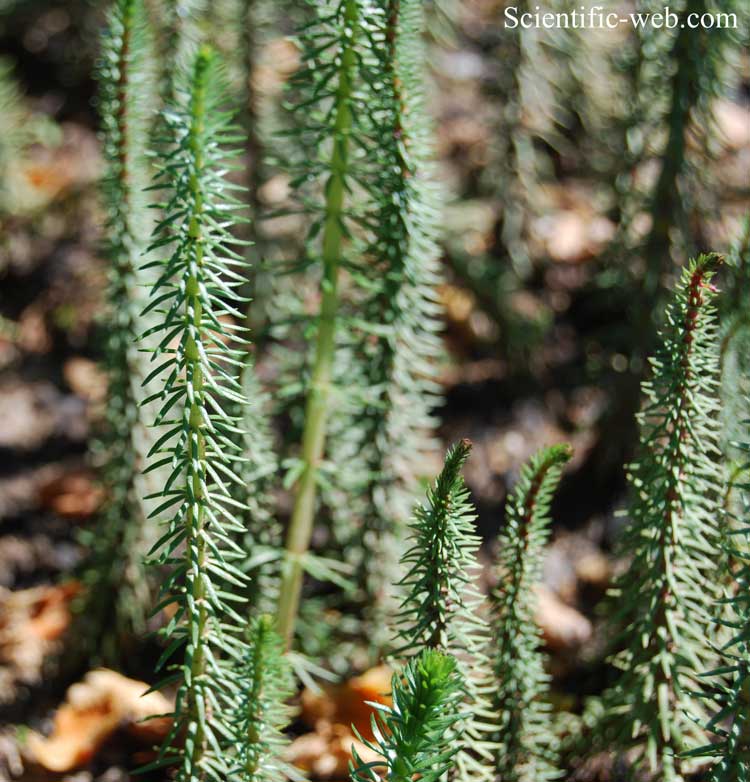
Hippuris vulgaris, Photo: Michael Lahanas
Classification System: APG IV
Superregnum: Eukaryota
Regnum: Plantae
Cladus: Angiosperms
Cladus: Eudicots
Cladus: Core eudicots
Cladus: Asterids
Cladus: Lamiids
Ordo: Lamiales
Familia: Plantaginaceae
Tribus: Callitricheae
Genus: Hippuris
Species: Hippuris vulgaris
Name
Hippuris vulgaris L.
References
Linnaeus, C. 1753. Species Plantarum. Tomus I: 4. Reference page.
USDA, ARS, Germplasm Resources Information Network. Hippuris vulgaris in the Germplasm Resources Information Network (GRIN), U.S. Department of Agriculture Agricultural Research Service. Accessed: 09-Oct-10.
Vernacular names
azərbaycanca: Adi su şamcığı
беларуская: Хвоснік звычайны
čeština: prustka obecná
Cymraeg: Rhawn y gaseg
dansk: Vandspir
Deutsch: Tannenwedel, Gemeiner Tannenwedel, Gewöhnlicher Tannenwedel
English: common mare's tail, mare's-tail, horsetail
suomi: Lamparevesikuusi, vesikuusi
français: pesse d'eau
Gaeilge: Colgrach
hornjoserbsce: Wšědny truskawc
íslenska: Lófótur
italiano: Coda di cavallo acquatica
日本語: スギナモ
lietuvių: Paprastoji uodeguonė
Nederlands: Lidsteng
polski: Przęstka pospolita
русский: Водяная сосенка, Хвостник обыкновенный
slovenčina: truskavec obyčajný
svenska: Hästsvans, Ledört, Hästsvansört, Ledgräs, Vattengran, Kärrgran
Hippuris vulgaris (from Greek: ἵππος — horse and οὐρά — tail), known as mare's-tail[1] or common mare's-tail, is a common aquatic plant of Eurasia and North America ranging from Greenland to the Tibetan Plateau to Arizona. It prefers non-acidic waters.
Description
The common mare's tail is a creeping, perennial herb, found in shallow waters and mud flats. It roots underwater, but most of its leaves are above the water surface. The leaves occur in whorls of 6-12; those above water are 0.5 to 2.5 cm long and up to 3 mm wide, whereas those under water are thinner and limper, and longer than those above water, especially in deeper streams. The stems are solid and unbranched but often curve, and can be up to 60 cm long. In shallow water they project 20–30 cm out of the water. It grows from stout rhizomes. The flowers are inconspicuous, and not all plants produce them. Studies of H. vulgaris in the Tibetan Plateau have shown that it is a prolific methane emitter.[2] H. vulgaris's roots extend into the anoxic zone of wetland soils and create a conduit for methane produced in the anoxic zone to travel to the atmosphere.
Uses
It can also be a troublesome weed, obstructing the flow of water in rivers and ditches.
References
BSBI List 2007 (xls). Botanical Society of Britain and Ireland. Archived from the original (xls) on 2015-06-26. Retrieved 2014-10-17.
Hirota, H., Tang, Y., Hu Q. et al. (2004) Methane emissions from different vegetation zones in a Qinghai-Tibetan Plateau wetland. Soil Biology & Biogeochemistry, 36, 737-748
Retrieved from "http://en.wikipedia.org/"
All text is available under the terms of the GNU Free Documentation License

